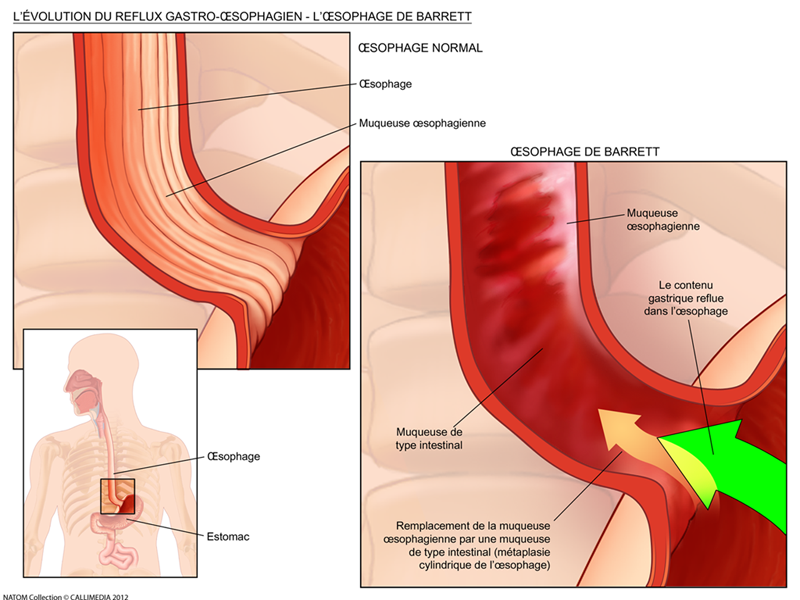Definition of gastroesophageal reflux disease
Gastroesophageal reflux refers to the upwelling of part of the stomach’s contents in the oesophagus (the tube connecting the mouth to the stomach). The stomach produces gastric juices, highly acidic substances that help digestion of food. However, the oesophagus wall is not designed to withstand the acidity of the stomach contents. Reflux therefore causes inflammation of the oesophagus, which results in burning and irritation. Over time, damage to the oesophagus can result. Note that a low level of reflux is normal and inconsequential. This is normal and called physiological reflux.
Heartburn is often referred to as gastroesophageal reflux disease.
The specific medical term is pyrosis.
Causes
In most people with reflux disease, the lower oesophageal sphincter malfunctions. This sphincter is a muscle ring located at the junction of oesophagus and the stomach. Normally, it is tight, preventing the contents of the stomach from moving back up to the oesophagus. The sphincter opens only to allow the ingested food to pass through and thus acting as a protective valve.
In case of reflux, the sphincter opens at the wrong times and lets the stomach juices rise. People who suffer from reflux often have acidic regurgitations after a meal or during the night. This phenomenon of regurgitation is very common in infants, because their sphincter is immature.
Gastroesophageal reflux may also be linked to hiatal hernia, where the upper part of the stomach (located at the junction of the oesophagus) “rises” with the oesophagus into the rib cage through the opening of the diaphragm (the hiatal opening).
However, hiatal hernia and gastroesophageal reflux are not synonymous, and hiatal hernia is not always associated with reflux.
Complications
Prolonged exposure of the oesophagus to acidic gastric substances can cause:
-
Inflammation (oesophagitis), with lesions of the oesophagus like ulcers (or sores) on the wall of the oesophagus, which are graded in 4 stages, depending on their number, depth, and extent;
-
this inflammation or ulcer can cause bleeding
-
narrowing the diameter of the oesophagus (peptic stenosis), which can cause difficulty swallowing and pain during swallowing;
-
Barrett’s oesophagus. This is the replacement of cells in the lining of the oesophagus with cells that normally evolve in the intestine. This replacement is due to repeated “attacks” of stomach acid in the oesophagus. It is not accompanied by any particular symptoms, but can be detected by an endoscopy because the normal gray-pink color of the oesophagus tissues takes on an inflamed salmon pink color. Barrett’s oesophagus is at risk of ulcers and, above all, oesophageal cancer.
Gastroesophageal reflux can also lead to complications:
-
a chronic cough,
-
a hoarse voice
-
a laryngospasm
-
oesophageal or laryngeal cancer in the case of uncontrolled and unfollowed reflux.





